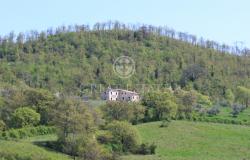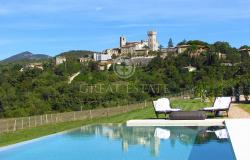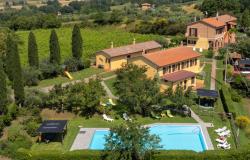 One of the most beautiful fresco cycles of the early Renaissance has been restored to its former glory and could soon regain its rightful place on the artistic map.
One of the most beautiful fresco cycles of the early Renaissance has been restored to its former glory and could soon regain its rightful place on the artistic map.
The frescoes by Fra Filippo Lippi in Prato's Duomo, illustrating the lives of St Stephen and John the Baptist, attracted throngs of admirers for hundreds of years - among them the foremost painters of he Pre-Raphaelite Movement.
But they slipped off Italy's art itinerary in later years - perhaps because of their location in a city known as the Manchester of Italy, a European hub for the textile trade.
Experts hope the six-year restoration will lure tourists north from the better-known attractions of Florence.
"This is a great chance to make the world aware of the importance of this truly great artist," said Claudio Cerretelli of Prato's Diocesan Museum.
"Filippo Lippi was one of the foremost artists of the 15th century. They came from far and wide to admire his works here in Prato. But recently he has been snubbed by critics".
Lippi (1406-1469), a flamboyant former monk whose life provided 15th-century art historian Giorgio Vasari with his most colourful material, painted the Prato frescoes at the height of his artistic powers, between 1452 and 1466.
In Italy they are so highly regarded that two stamps with scenes from the cycle were issued in October 2005.
The St Stephen pictures highlight the delicacy Lippi achieved in his later years, moving on from his early imitation of Masaccio's brute force, art experts say.
The John the Baptist stories are equally graceful but also contain a piquant detail from the lusty monk's life - or at least most people in Prato have always believed.
The dancing Salome has been traditionally identified as the nun Lucrezia Buti, Filippo's mistress and later wife who bore his son Filippino.
One of the best colourists of his day, Lippi excelled in a graceful, narrative style. His religious painting is highly decorative and full of keen observation and human interest.
Among his best-known works are Virgin Adoring the Christ Child in Florence's Uffizi Gallery; Madonna with Saints (Louvre); Annunciation and Vision of St Bernard (National Gallery, London); Coronation with Saints and Donors (Palazzo Venezia, Rome); and Madonna and Child with Angels (Metropolitan Museum in New York).
Among his pupils, as well as his son Filippino, were the great artists Sandro Botticelli and Benozzo Gozzoli.









